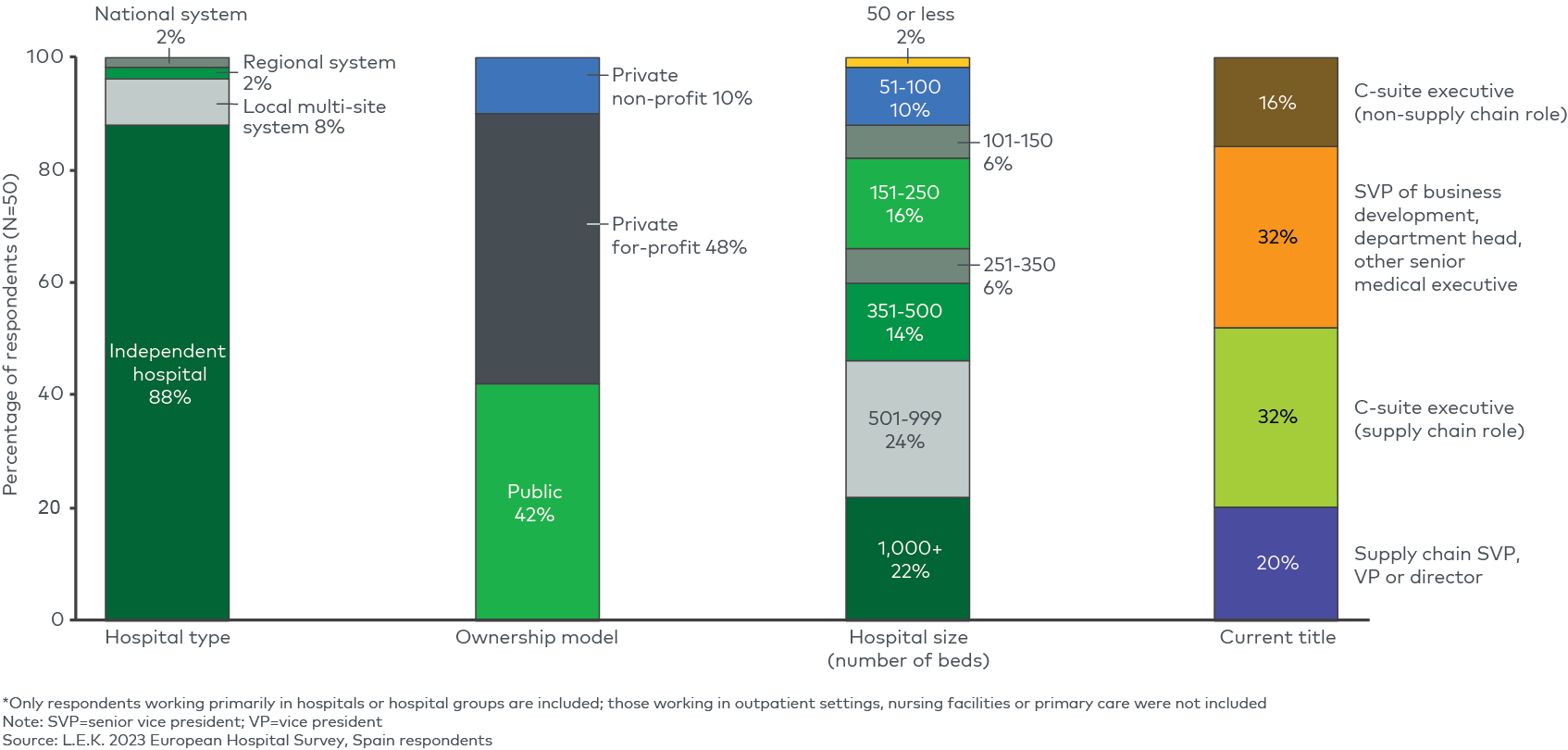Clinical and patient care
Maintaining clinical care quality is a top priority for hospitals in Spain. Within the category of clinical/patient care, some of Spain’s top strategic priorities (by percentage of respondents ranking them moderately to very important, a score of 6 or 7 out of 7) include reducing medical errors, improving infection control, improving quality metrics performance, reducing readmission rates and improving patient satisfaction. The Sistema Nacional de Salud’s (SNS, Spain’s national health system) High-End Technology Equipment Investment Plan (Plan de Inversiones en Equipos de Alta Tecnología, INVEAT), launched in 2021 to upgrade out-of-date medical equipment, may help support several of these priorities and improve the quality of patient care possible.
If access to greater funding and improvements in Spain’s staffing situation can be achieved to facilitate change, there is great opportunity for the quality of hospital care in Spain to be advanced in the future through a strong focus on clinical and patient care.
Staffing
Staffing is another important priority for many hospitals in Spain. Spain’s healthcare system has an overall shortage of nursing staff, with a density of 5.9 nurses per 1,000 people in 2019 compared to the EU average of 8.4 per 1,000. In addition, while the density of doctors in Spain overall is not as major a concern as in other European countries, there is an uneven distribution of doctors, geographically and by specialty, that creates a shortage of doctors for patients in some areas.
Respondents in Spain confirm that staffing is a key priority for hospitals, and they rate attraction and retention of physicians as the joint most important priority overall (c.85% of total respondents rate it as moderately to very important). Attraction and retention of allied medical/non-clinical staff and nurses followed, with c.75% and c.65% of Spanish respondents rating them as moderately to very important, respectively. While both private and public sector respondents perceive the importance of attraction and retention of physicians and nurses similarly, respondents in the public sector rate attraction/retention of non-clinical and allied medical specialists more important than do private hospital respondents.
A range of growth strategies are being considered by hospitals to expand their care offerings, with public hospitals in particular more likely to pursue such options.
Spanish hospitals are considering different growth options to expand their patient capacity and broaden their care offerings via acquisitions, partnerships or mergers.
In L.E.K.’s survey, public hospital respondents are more likely than private hospital respondents to pursue a range of growth strategies, with c.40%-50% of respondents noting they are moderately or very likely to pursue (scores of 6 or 7 out of 7) acquisition of or partnership with an imaging centre, a pathology lab or a rehabilitation facility in the next three years (see Figure 2). This may be because public hospitals have invested less in their infrastructure and equipment compared to private hospitals and therefore have greater need for support from an external partnership to be successful. Acquisition of or partnership with a general practice is topmost likely in the public sector, rated as moderately or very likely to be pursued by c.55% of respondents.















